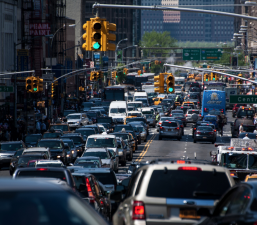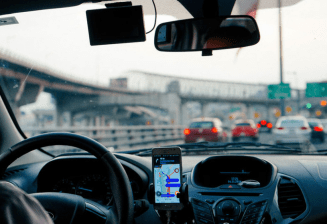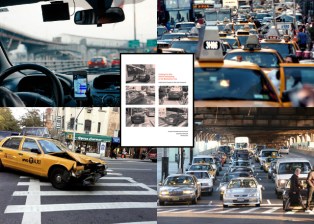It’s Not an Uber Cap — It’s a Course Correction for an Industry That’s Dangerously Out of Whack
The City Council is on the verge of passing bills that will help workers in the for-hire car industry and cut down on excess traffic.

Don’t call it an Uber cap.
Yes, the City Council is expected to pass a package of bills today that limit the growth of licenses for companies like Uber and Lyft over the next 12 months. But that’s not the big breakthrough in the legislation.
The real lever to manage traffic will come not from the cap, but from new powers vested in the Taxi and Limousine Commission to shift incentives for Uber and Lyft, curbing their mileage while increasing driver wages.
TLC regulatory authority isn’t the most gripping subject. But you should get excited. In a few short years, Uber and Lyft have tilted the city’s surface transportation system toward car-based growth, exacerbating traffic jams on the city’s most congested streets. With its new authority, the TLC will be able to nudge the companies to reduce the time their drivers spend cruising for fares and clogging streets without carrying any passengers.
To understand how the bills work and why they’re a big deal, it helps to catch up on analyst Bruce Schaller’s groundbreaking research on the modern for-hire vehicle industry. In successive reports, Schaller demonstrated how Uber and Lyft trips have increased daily traffic on NYC streets by millions of miles a day, and that mileage without a paying customer in the car accounts for a disproportionate share of this added traffic.
More drivers cruising around without passengers shorten wait times for Uber and Lyft customers when they request a ride, but make the transportation system worse for everyone else — including Uber and Lyft customers in the backseat, stewing in traffic. One of Schaller’s key insights is that Uber and Lyft traffic can be reduced with a negligible effect on wait times, since drivers spend the period between trips mostly waiting to be dispatched, not heading to pick up a fare.
For-hire drivers, meanwhile, have to work punishing hours for little pay because “there just aren’t enough fares to go around,” as Uber driver Tidiane Samassa recently wrote in the Daily News. “All of us are competing for a smaller slice of the pie as Uber adds more cars to the streets each month with no limit.”
The industry is out of whack. “The tension here is between limiting traffic and having service on the street,” Schaller told Streetsblog. “I think the balance has been tilted too far toward having vehicles on the street.”
Citywide, Uber and Lyft vehicles have no passenger 45 percent of the time they’re in service, according to Schaller’s analysis of trip data. To reduce that unoccupied time, the centerpiece of the City Council legislative package, Intro 144 (sponsored by Council Member Steve Levin), enables the TLC to establish “vehicle utilization standards” in specific parts of the city.
To give an example, Uber and Lyft could be required to reduce the rate of drivers’ unoccupied time to 20 percent in Manhattan below 96th Street, and pay a penalty if their fleets fail to attain that target within a given 24-hour period. The geographic boundaries and mandated “utilization rates” would be left to the TLC to determine.
Also pushing in the direction of higher occupancy rates and less traffic will be the minimum wage standards enabled by Intro 890, sponsored by Council Member Brad Lander. Setting a compensation floor for Uber and Lyft drivers will increase the share of vehicles’ time with a paying passenger. As with Levin’s bill, the actual rate-setting would be up to the TLC.
“The council wanted to set the broad parameters, and give the TLC authority to respond in a way that adapts to changing conditions,” Schaller said. “That’s the right instinct.”
While Uber and Lyft have argued that the bills would deprive the boroughs outside Manhattan of service, the TLC is expected to calibrate incentives in the other direction. Mandating higher utilization rates in Manhattan, for instance, should lead more drivers to circulate outside the central business district, as long as Uber and Lyft respond in good faith and don’t try to sabotage the new rules.
The legislation is not a substitute for congestion pricing, which would pack a much stronger punch as a traffic reducing mechanism. Nor is it the assault on Uber and Lyft that the companies have made it out to be. It’s not even a cap — the limit on new licenses for Uber and Lyft doesn’t apply to wheelchair-accessible vehicles and may serve as an incentive to make fleets accessible more than a hard constraint on growth.
The City Council has drafted a course correction that will help workers in the for-hire car industry and cut down on excess traffic. It will also set a precedent for other large American cities where Uber and Lyft are straining transportation systems in similar fashion.
“New York has tremendous market power, both in the simple sense, and the symbolic sense,” said Schaller. “This is landmark legislation. It will be highly influential.”



